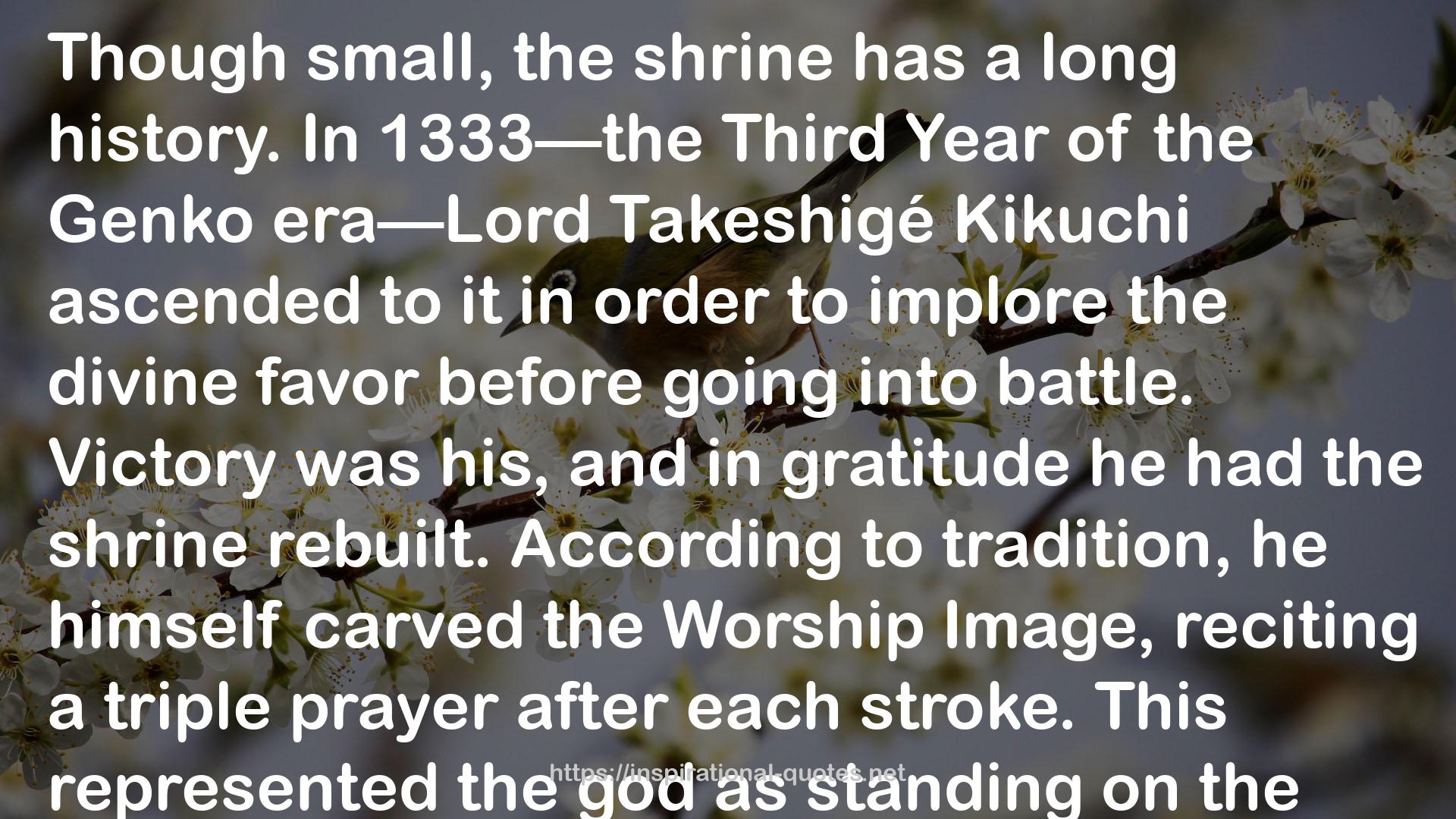" Though small, the shrine has a long history. In 1333—the Third Year of the Genko era—Lord Takeshigé Kikuchi ascended to it in order to implore the divine favor before going into battle. Victory was his, and in gratitude he had the shrine rebuilt. According to tradition, he himself carved the Worship Image, reciting a triple prayer after each stroke. This represented the god as standing on the mountain peak with one hand raised, gazing at the armed host he had blessed. It was an image of victory.
Now, however, the morning after the rising, early on the auspicious Ninth Day of the Ninth Month, the time of the Chrysanthemum Festival, there were gathered around the shrine forty-six hunted survivors of a defeated force. Some standing, some sitting, they stared blankly about them, though the penetrating autumn chill made their wounds sting. The clear light of the rising sun cast a striped pattern as it shone down through the branches of the few old cedars that surrounded the shrine. Birds were singing. The air was fresh and clear. As for signs of last night’s sanguinary combat, these were visible in the soiled and bloodstained garments, the haggard visages, and the eyes that burned like live embers.
Among the forty-six were Unshiro Ishihara, Kageki Abé, Kisou Onimaru, Juro Furuta, Tsunetaro Kobayashi, the brothers Gitaro and Gigoro Tashiro, Tateki Ura, Mitsuo Noguchi, Mikao Kashima, and Kango Hayami. Every man was silent, sunk deep in thought, looking off at the sea, or at the mountains, or at the smoke still rising from Kumamoto.
Such were the men of the League at rest on the slope of Kimpo, some with fingers yellowed from brushing the petals of wild chrysanthemums that they had plucked while staring across the water at Shimabara Peninsula. "
― Yukio Mishima , Runaway Horses
